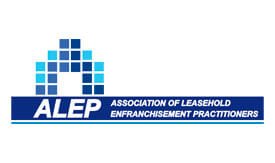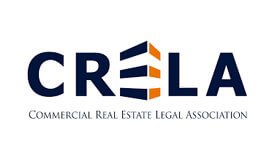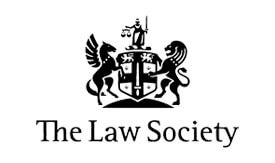On 11 March 2021, the UK government published the Finance Bill 2021. The bill confirmed that it will be continuing with plans on the proposed changes in the July 2020 draft legislation in relation to Stamp Duty Land Tax (“SDLT”) for purchasers of residential property who are not resident in the UK.
Accordingly, from 01 April 2021, SDLT rates for non-residents will be 2% higher than the existing rates applicable to UK residents. The surcharge will be in addition to the additional dwellings surcharge for second homes and buy to lets and the flat 15% rate on residential purchases of over £500,000 by companies.
The surcharge, will be payable regardless of whether buying through a company or as an individual and regardless of whether the non-resident buyer intends to live in the property, or whether they currently already own a residential property elsewhere in the UK, or the world.
The definition of ‘non-UK residents’ and ‘non-resident transactions’ include;
- Individuals – Individual buyers who are not present in the UK for at least 183 days during the 12 months prior to their purchase. Please note that, an individual could be regarded as a UK resident for income tax purposes but non resident for SDLT purposes.
- Joint-Buyers – If one of the joint buyers has not been in the UK for at least 183 days during the last 12 months, then all joint buyers are treated as non-UK residents in relation to the transaction.
- Married Joint-Buyers – If married couples buy a property together, if one of you has been in the UK for at least 183 days during the last 12 months, then both individuals will be treated as UK buyers in relation to the transaction.
- Business Partners – Purchases by partnerships are treated as made by the partners. Therefore, if one partner (company or individual) is regarded as non-resident, the whole transaction would be “surcharged”. Purchases by trusts are treated as made by the trustees or beneficiaries depending on the type of trust and the existence of a “life interest”.
- Non-bare trusts – having a non-UK resident trustee may bring the purchase of residential property within the 2% surcharge where a direct purchase by the beneficiaries would not be.
- Corporate Buyers – Companies buying properties will be treated as UK residents if it is a UK resident when considered for Corporation Tax purposes. However, there are special rules which apply to UK resident companies which are under the control of non-UK resident individuals; such companies will be non-UK residents if the company:
- is a ‘close’ company (i.e. one which is under the control of five or fewer shareholders/participators)
- meets the non-UK control test in relation to the transaction
- is not an ‘excluded’ company
More specific details on how companies will be treated in these matters can be found in part SDLTM09910 of the SDLT Manual.
Transitional rules
The 2% surcharge will apply to property purchases from April 1st 2021 subject to transitional rules for transactions where:
- contracts have been exchanged before March 11th 2020 but do not complete until or after April 1st 2021; and
- for contracts that are “substantially performed” before April 1st 2021 but do not complete until after April 1st 2021.
You can find more information on the stamp duty holiday and substantial performance prior to 31 March 2021 in our guide here.
Calculating SDLT
The UK Chancellor put in in place a temporary reduction or ‘holiday’ in SDLT from 08 July 2020 to March 31 2021. This was recently been extended to 30 June 2021, with a tapering of the reduction from 01 July 2021 to 30 September 2021.
The 2% surcharge will be applicable to the rate of SDLT payable by resident buyers, in force on the date of completion. The tables below show the effect of the surcharge in conjunction with the rates in force between 01 April 2021 – 01 October 2021 and onwards.
You may find this online calculator useful – overseas buyer or UK non- resident SDLT calculator.
01 April 2021 – 30 June 2021
| Bands | UK Resident Rate | Non-UK Resident Rate
(Surcharge) |
|
| Standard Rate | Additional Property | ||
| Up to £500,000 | 0% | 3% | +2% |
| £500,000 – £925,000 | 5% | 8% | +2% |
| £925,001 – £1,500,000 | 10% | 13% | +2% |
| £1,500,001+ | 12% | 15% | +2% |
01 July 2021 – 30 September 2021
| Bands | UK Resident Rate | Non-UK Resident Rate
(Surcharge) |
|
| Standard Rate | Additional Property | ||
| Up to £250,000 | 0% | 3% | +2% |
| £250,000 – £925,000 | 5% | 8% | +2% |
| £925,001 – £1,500,000 | 10% | 13% | +2% |
| £1,500,001+ | 12% | 15% | +2% |
01 October 2021 onwards
| Bands | UK Resident Rate | Non-UK Resident Rate
(Surcharge) |
|
| Standard Rate | Additional Property | ||
| Up to £125,000 | 0% | 3% | +2% |
| £125,001 – £250,000 | 2% | 5% | +2% |
| £250,001 – £925,000 | 5% | 8% | +2% |
| £925,001 – £1,500,000 | 10% | 13% | +2% |
| £1,500,001+ | 12% | 15% | +2% |
SDLT Refunds
Individual buyers are able to claim a refund of the 2% surcharge if, after the purchase, they are present in the UK for at least 183 days during any continuous 365-day period that falls within a 2-year period;
- beginning 364 days before the effective date of the transaction
- ending 365 days after the effective date of the transaction
If the transaction has more than one individual buyer, refunds are only possible if all the buyers satisfy this residence rule.
The refund is claimed by submitting an amended SDLT return to take account of the fact that the transaction is ultimately not liable to the surcharge. This can be done within 2 years after the effective date of the transaction once the residence rule is satisfied.
HMRC are due to publish what things they will accept as proof of residence.
Are there any exemptions?
The surcharge does not apply to purchases of property, or part of a property, if the property is either a:
- non-residential property
- mixture of residential and non-residential, for example, a shop with a flat above it, unless a claim to Multiple Dwellings Relief is made
The surcharge also does not apply to property you lease if your lease is for 7 years or less, on the date it was granted.
Further Guidance
Full guidance can be found on the government’s publication dated 08 March 2021.






